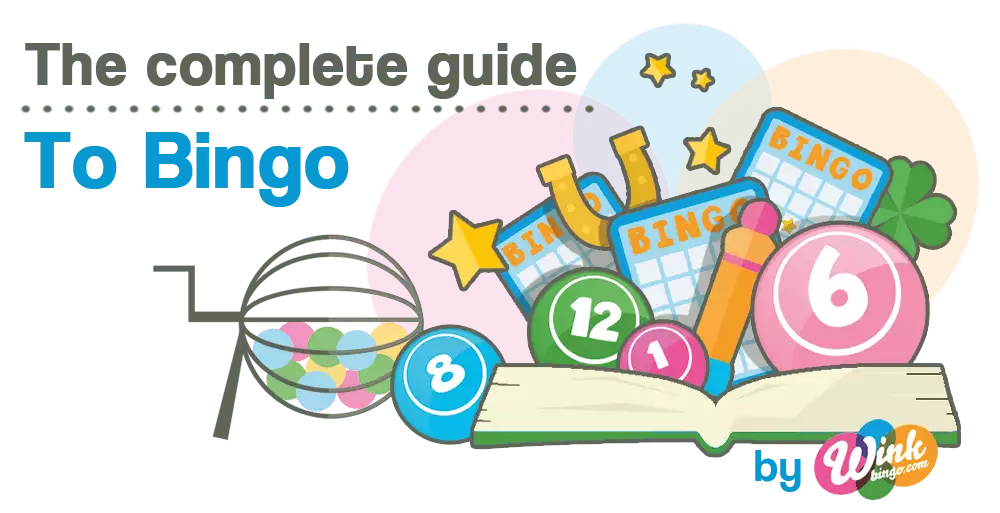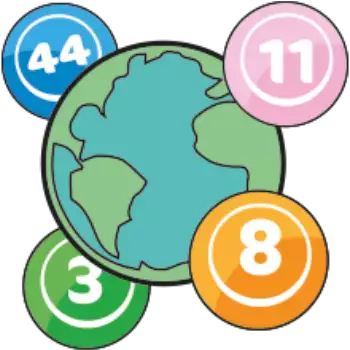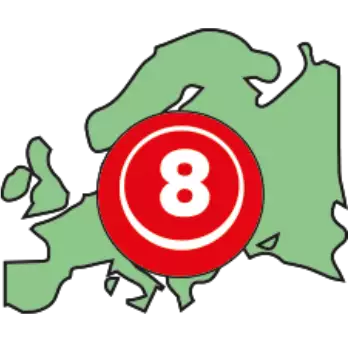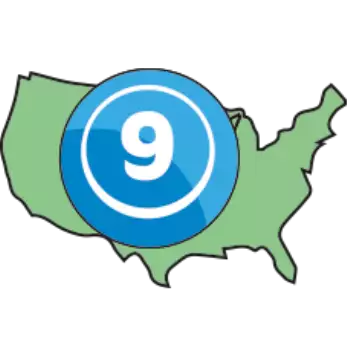Chapter Five: Bingo Variants

Ways to Play Around the World
In this chapter we will cover:
- Traditional games in Europe
- Traditional games in North America
- Comparing the credentials of European and North American bingo
- Online bingo basics

Leaving the growth of online bingo to one side, the history of bingo has shown that land-based games developed in two main areas - the United Kingdom and the United States. From a general perspective, this transatlantic relationship helped create a flourishing industry but it is also resulted in two main variants. In simple terms, UK and US bingo differ in the amount of numbers in play. Although the general mechanics of each variant are identical, UK and US bingo do offer a slightly different gaming experience.
Traditional Bingo Games in Europe
If looking back through this guide to the early development of the game, it is noticed that bingo in Europe evolved from a number of sources. Early instances of lottery-style games in France and Germany eventually found their way to the UK where today's format was formalised and the 90-ball structure was born.

To ensure a fair game, the UK version of bingo (which is also the European version of bingo) uses 90 balls (numbered from one to 90) and game cards that are split into a 9x3 structure. A standard game card using the 9x3 format will contain three rows housing nine squares. Within this grid a total of 15 random numbers are placed and, because of the way the numbers are printed (bingo tickets come in rolls of six), it is possible to cover every number if six game tickets are purchased.
It is important to note that purchasing six tickets does not guarantee a win. Each ticket contains a random mix of numbers and it is this random structure that ensures all tickets have an equal chance of winning. Looking at the probabilities in a game of UK bingo, there are a lot of numbers to consider. To really understand the game, it is necessary to compare it to another variant. As a starting point, the probabilities for completing a line, two lines and a full house in the quickest number of calls possible are as follows:
- Single line in five calls = 1 in 14,649,756
- Two lines in ten calls = 1 in 1,906,881,827,301
- Three lines (full house) in 15 calls = 1 in 45,795,673,964,460,800
Traditional Bingo Games in the US
As noted, bingo in the US is different from bingo in the UK because of the amount of numbers in the game. Under the rules of traditional US bingo there are 75 number balls in play and, like the UK version of the game, the game tickets are structured in such a way that all competitors have a fair shot at winning.

The main difference between a US bingo ticket and a UK game card can be seen at the top of the former. A purchased ticket has the word BINGO printed at the top and this helps set the 5x5 structure for the ticket.
Unlike UK bingo tickets, there is only one free square in US bingo and the rest of the card is filled with a total of 24 numbers. Another difference between US and UK bingo tickets is that the former do not run in the same consecutive order as the latter.
As noted above, UK bingo tickets come in blocks of six which means it is possible to claim every number if you purchase six tickets. In contrast, each US bingo ticket is unique and this means players who purchase multiple tickets can have duplicate numbers.
The other major difference between US and UK bingo is that the American version does not rely on lines. Instead of players having to fill one, two and then three lines, US bingo players are aiming to make certain patterns (which can include lines). At the start of the game, the players are told which pattern they are playing (e.g. four corners, a star, diagonal lines, letters) and they must mark off the numbers that correspond to the designated pattern.
In ‘cover all’ games, players are aiming to mark off every square in the same way they would if they were playing for a full house in UK bingo.
Comparing US and UK Bingo
As can be seen, the ways in which players win differs between US and UK bingo and that means it is difficult to compare the probabilities for each game. However, by taking the odds of marking off all the numbers on a ticket and comparing the odds of completing each in the quickest number of calls possible, we get the following:
% chance of UK bingo full house in 15 calls = 0.0000000016
% chance of US bingo cover all in 24 calls = 0.00000000000000000004

The chance of hitting a full house in the minimum number of calls is far better in UK bingo but there are also fewer calls so it is not strictly fair to compare each game in this way. If judging either game on a probability basis, however, the chances of marking off every number on a card would be much better in UK bingo.








